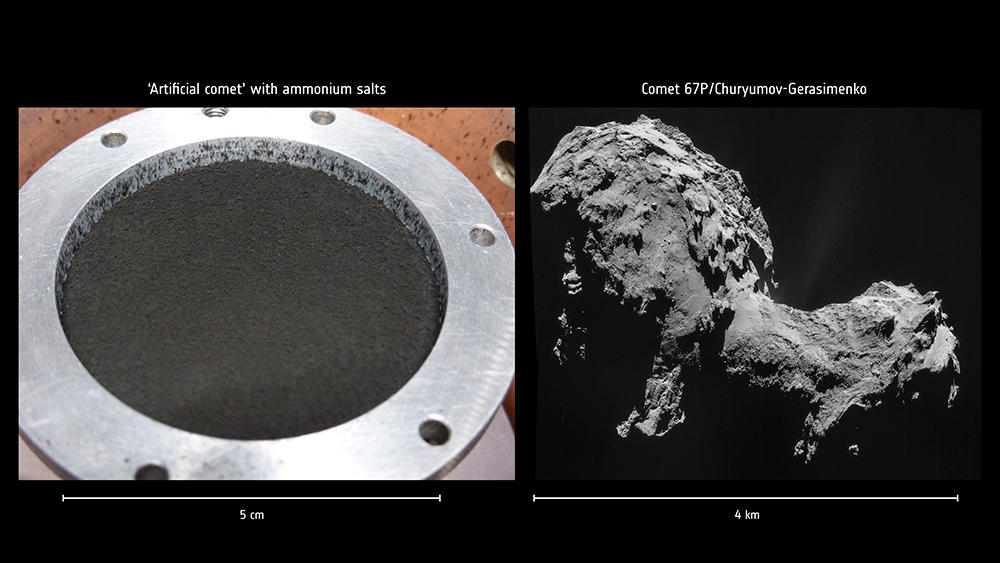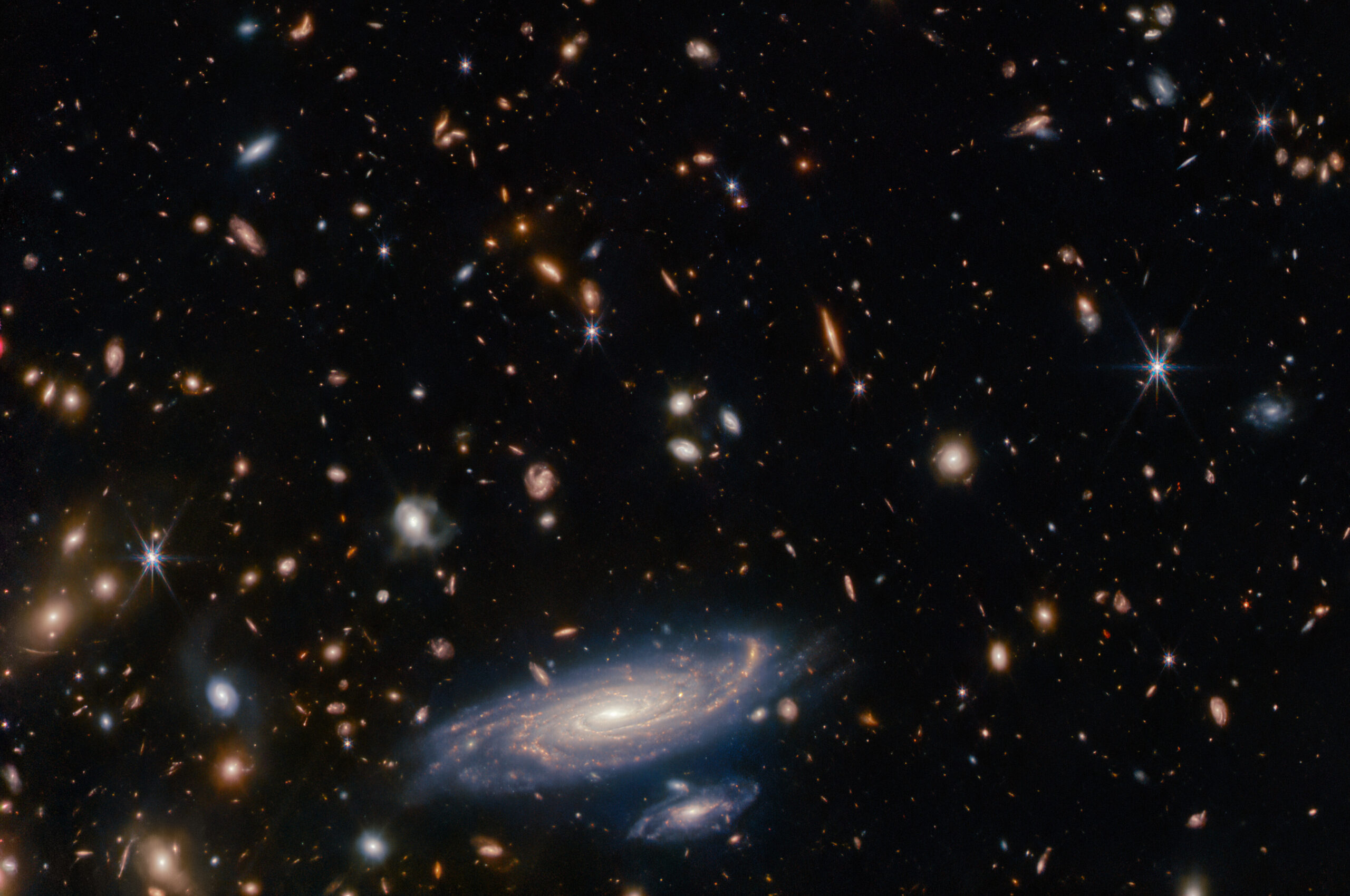Report from ISSI Team #397 Comet 67P/Churyumov-Gerasimenko Surface Composition as a Playground for Radiative Transfer Modeling and Laboratory Measurements” led by M. Ciarniello
A primary goal of ESA’s Rosetta mission to comet 67P/Churyumov-Gerasimenko (hereafter 67P) was the characterization of the nucleus material.
The Visible Infrared and Thermal Imaging Spectrometer (VIRTIS) revealed a mostly spectrally uniform nucleus surface, dominated by a low-albedo material exhibiting a broad infrared absorption centered at 3.2 µm. The surface composition of the comet was found compatible with a mixture of organics, minerals and minor amounts of ices, although the identification of the compounds responsible for the 3.2-µm feature has remained challenging so far.

Ammonium salts found on Rosetta’s comet (Image Credit: O. Poch, IPAG, UGA/CNES/CNRS (left); ESA/Rosetta/NavCam – CC BY-SA IGO 3.0 (right))
Here we report the results of a refined analysis of measurements acquired by the instrument’s infrared mapping channel (VIRTIS-M-IR).
In particular, spectral signatures of aliphatic organics within the broad absorption band were identified for the first time on a cometary nucleus. In addition, further investigations by means of laboratory experiments allowed the identification of ammonium salts as carriers of the 3.2-µm absorption feature. These salts may be a major reservoir of nitrogen in comets.
These studies highlight similarities between the infrared spectrum of 67P with those of other minor bodies in the Solar System, including some outer belt asteroids and Jupiter Trojans. As a consequence, these bodies may host organic materials and/or ammoniated salts, blurring the distinction between comets and other primitive objects. Aliphatic features in 67P appear similar to the typical aliphatic features in the interstellar medium (ISM) and are also compatible with those of the chondritic insoluble organic matter (IOM). This suggests that the organic material may be inherited from the ISM by comets and other minor bodies that delivered it to the inner Solar System. Similarly, ammoniated salts, potentially formed in the icy mantle of dust grains in the pre-stellar or protoplanetary phases, could have provided nitrogen to the inner planets. Such processes could have favored the emergence of a prebiotic chemistry.
These investigations took advantage, among other authors, of the collaboration of the ISSI Team “Comet 67P/Churyumov-Gerasimenko Surface Composition as a Playground for Radiative Transfer Modeling and Laboratory Measurements” led by M. Ciarniello and have been published in two separate papers:
“Infrared detection of aliphatic organics on a cometary nucleus” by A. Raponi et al., 2020, Nature Astronomy; DOI: https://doi.org/10.1038/s41550-019-0992-8
“Ammonium salts are a reservoir of nitrogen on a cometary nucleus and possibly on some asteroids” by O. Poch et al., 2020, Science 367, DOI: https://dx.doi.org/10.1126/science.aaw7462
